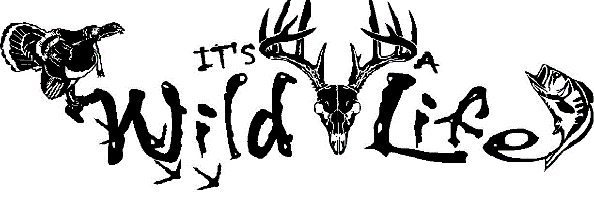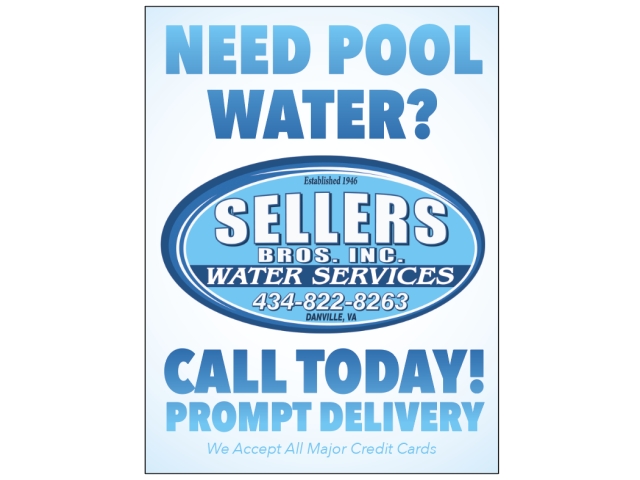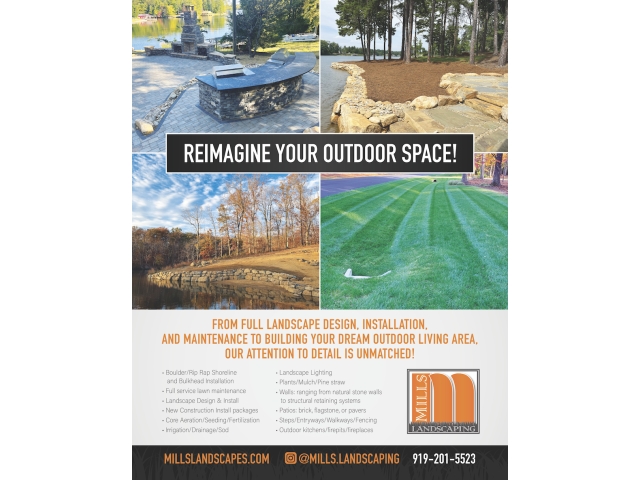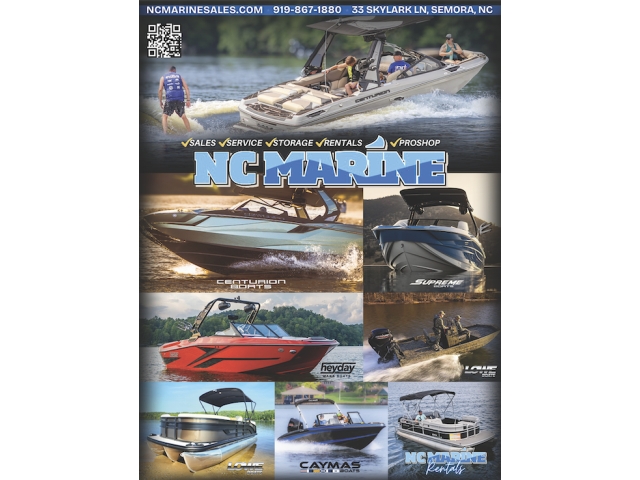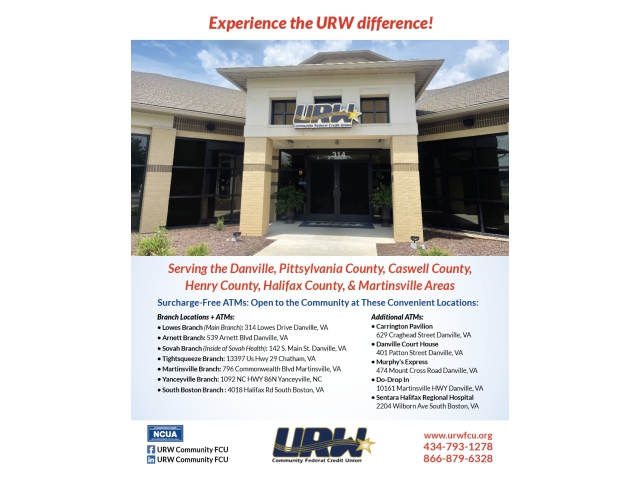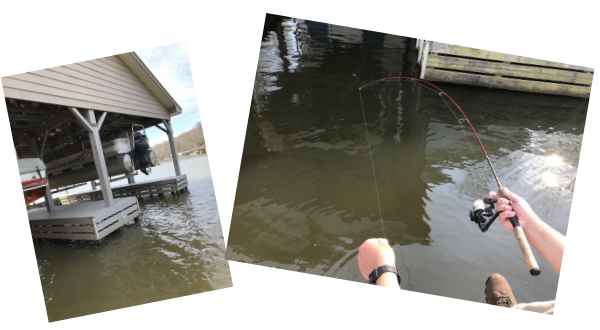
A Cool Place to Be
By Sam Seamster
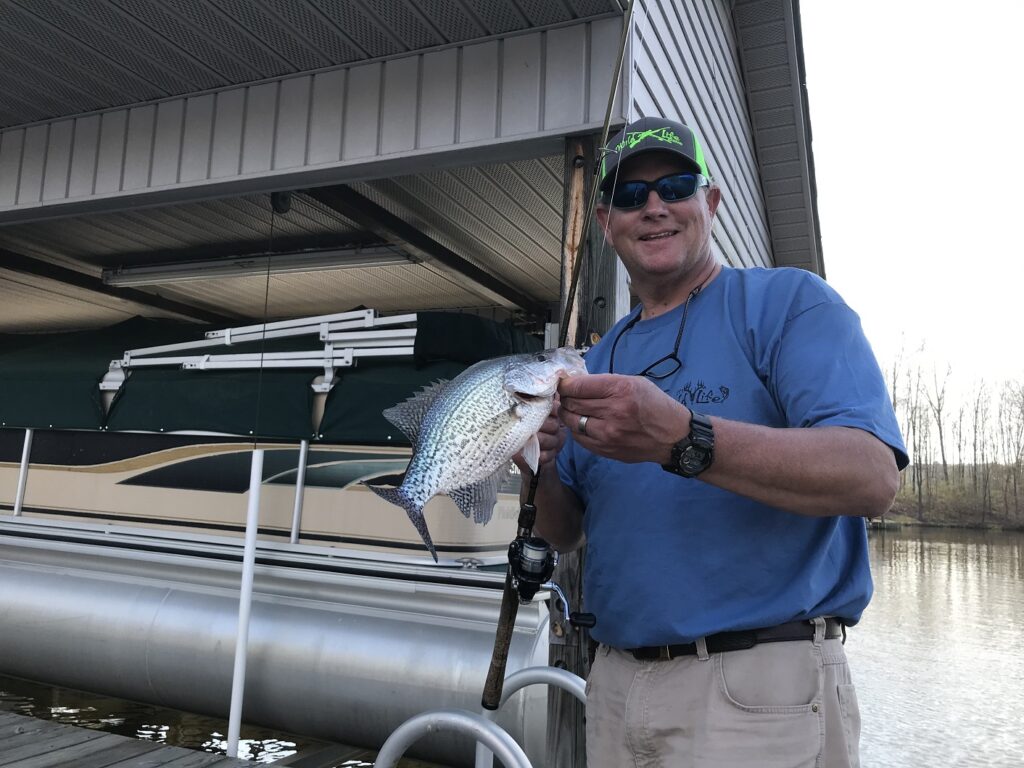 As we approach the hot days of the summer months, we find that fishing has been rapidly changing over the past few weeks. Water temperatures in the shallows are starting to rise to an uncomfortable level for bass and crappie. As that happens, fish begin to stage in deeper areas of the lake; moving off to some underwater structure where they can find a more moderate temperature to feel comfortable. Once fish make this transition, one of their favorite places to hang out is in the shadows of a dock.
As we approach the hot days of the summer months, we find that fishing has been rapidly changing over the past few weeks. Water temperatures in the shallows are starting to rise to an uncomfortable level for bass and crappie. As that happens, fish begin to stage in deeper areas of the lake; moving off to some underwater structure where they can find a more moderate temperature to feel comfortable. Once fish make this transition, one of their favorite places to hang out is in the shadows of a dock.
Before we get into the meat of how we approach fishing a dock, let’s first talk about some of the differences in a particular dock. There are a couple of reasons a fish seeks this type of shelter. First on the list is shade from the sun. If a lake has no docks on it, fish will just position themselves on deeper structures. Secondly, it provides cover, a place to be protected from a predator fish and a place to be a predator.
In my opinion, a dock has to have a couple of the following features to be considered a good dock to fish. First, it needs deeper water on the tip end — 10 feet deep or more. Having depth gives fish the ability to lower themselves deeper to find cool water while being hidden around the legs of the structure. During the early morning and evening hours fish can rise and feed when they need to. Second on the list is having a large deck area. In other words, the more shade a dock provides, the more apt it is to hold fish. For the purpose of this article we will focus on two fish species; both the large-mouth bass and crappie are readily found around these structures during the summer months.
Around the Dock
 Once you have chosen a dock, you should break it down into sections that you want to fish. First, you have the sides of the dock that may hold fish. You will also want to fish along the front of the dock. There is also the boat slip, which allows you to cast deeper under the dock. Finally, there is the large, flat deck area. You want to position the boat so you can fish along the side of the dock from the back to the front, making casts and working the lure back to the boat. Positioning the boat on the corner of the dock allows the fisherman to make casts across the front and the side without moving the boat. Hopefully, the fish will be hanging out under the dock, in the shadows, waiting to eat your lure.
Once you have chosen a dock, you should break it down into sections that you want to fish. First, you have the sides of the dock that may hold fish. You will also want to fish along the front of the dock. There is also the boat slip, which allows you to cast deeper under the dock. Finally, there is the large, flat deck area. You want to position the boat so you can fish along the side of the dock from the back to the front, making casts and working the lure back to the boat. Positioning the boat on the corner of the dock allows the fisherman to make casts across the front and the side without moving the boat. Hopefully, the fish will be hanging out under the dock, in the shadows, waiting to eat your lure.
Boat Slip
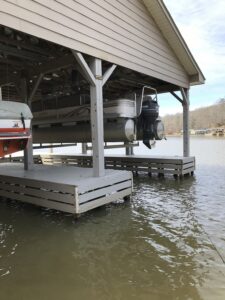 The next cast will be into the boat slip itself, casting or skipping a lure to the back of the slip and working the lure back to the boat. Now this is where some fisherman can get into trouble. No dock owner wants you to be bouncing a 3/8 ounce lure off the side of their $40,000+ boat, so caution should be taken while casting around someone else’s boat or jet ski. I will also add that if dock owners are out enjoying their dock, be respectful and pass on by so they can also enjoy the lake.
The next cast will be into the boat slip itself, casting or skipping a lure to the back of the slip and working the lure back to the boat. Now this is where some fisherman can get into trouble. No dock owner wants you to be bouncing a 3/8 ounce lure off the side of their $40,000+ boat, so caution should be taken while casting around someone else’s boat or jet ski. I will also add that if dock owners are out enjoying their dock, be respectful and pass on by so they can also enjoy the lake.
Under the Deck
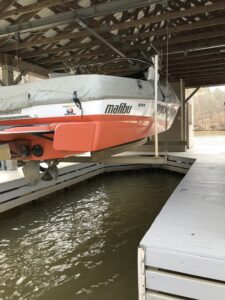 Once you have fished these areas, now you have the hard task of fishing under the deck landing area. This area normally has three or four horizontal boards running the length of the deck and very close to the water. The challenge is to get a lure through that small opening and skip the lure at least a foot or two under the dock. If you can master this, you can really catch some fish. I remember one time, I got down close to one of these docks and looked through the opening. I could see crappie everywhere under this covering.
Once you have fished these areas, now you have the hard task of fishing under the deck landing area. This area normally has three or four horizontal boards running the length of the deck and very close to the water. The challenge is to get a lure through that small opening and skip the lure at least a foot or two under the dock. If you can master this, you can really catch some fish. I remember one time, I got down close to one of these docks and looked through the opening. I could see crappie everywhere under this covering.
In order to get a lure under the opening, skip the lure like you would skip a rock across the water. Start by holding your rod tip down at a five or six o’clock position. You should have about six to 10 inches of line hanging out the tip of the rod, bringing the rod tip back and then forward with a swift swinging motion all the while keeping the tip of the rod low to the water. The lure should strike the water surface just under the board that sits above the water, then skip back under the dock itself. It takes some practice to get the hang of this method.
Dock Shooting
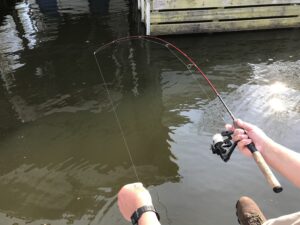 Shooting a lure back under the dock will require a shorter rod. Let out enough line so that the lure hangs about half the length of the rod, then flip the bell and hold the line like you’re getting ready to cast. Take the lure between your index finger and thumb, lower the rod so it is horizontal to the water with the lure in hand, pull back the lure until the rod is bowed, and now release the lure. The bent tip of the rod provides the energy to propel the lure through the air and under the dock. This method is easier to master than skipping under a dock. Caution should be taken while applying this method to avoid hooking your fingers or hand while shooting a lure. This can be practiced in the yard before you get to the lake. Practice these methods. I know it will help you catch more fish.
Shooting a lure back under the dock will require a shorter rod. Let out enough line so that the lure hangs about half the length of the rod, then flip the bell and hold the line like you’re getting ready to cast. Take the lure between your index finger and thumb, lower the rod so it is horizontal to the water with the lure in hand, pull back the lure until the rod is bowed, and now release the lure. The bent tip of the rod provides the energy to propel the lure through the air and under the dock. This method is easier to master than skipping under a dock. Caution should be taken while applying this method to avoid hooking your fingers or hand while shooting a lure. This can be practiced in the yard before you get to the lake. Practice these methods. I know it will help you catch more fish.
Fishing from the Dock
This is for dock owners: One easy way to catch crappie is to vertical jig straight down beside the dock. Let out about six feet of line and simply move slowly along the dock edge while feeling for a bite. You can fish down both sides of the dock and in the boat slip. If you have a dock that is blessed to have deeper water, let out two more feet of line and continue to move around until you locate an area that is productive. The most important thing to remember is, “Shade.” No matter where it is around the dock, that is where you want to be fishing.
Special Landholder & Guest Fishing License
If you own a dock and frequently have guests who want to fish but have reservations because they don’t have a North Carolina fishing license, the Commission has a permit a dock owner can purchase. This permit allows dock owners and guests to fish only on their dock or property. See below, taken directly from the NORTH CAROLINA WILDLIFE COMMISSION website.
Special Landholder & Guest Fishing License Application. Wildlife Resources Commission. Read the below carefully before completing this application. Provisions: A Special Landholder and Guest Fishing License ($108*) may be obtained by the landholder of private property bordering inland or joint fishing waters, including public mountain trout waters. This license shall entitle the landholder and guests of the landholder to fish from the shore or any pier or dock originating from the property without any additional fishing license. This license is applicable only to private property and private docks and piers and is not valid for any public property, pier, or dock nor for any private property, pier, or dock operated for any commercial purpose whatsoever. This license shall not be in force unless.
I hope this information is helpful and as always, “I’ll see you on the water.”
